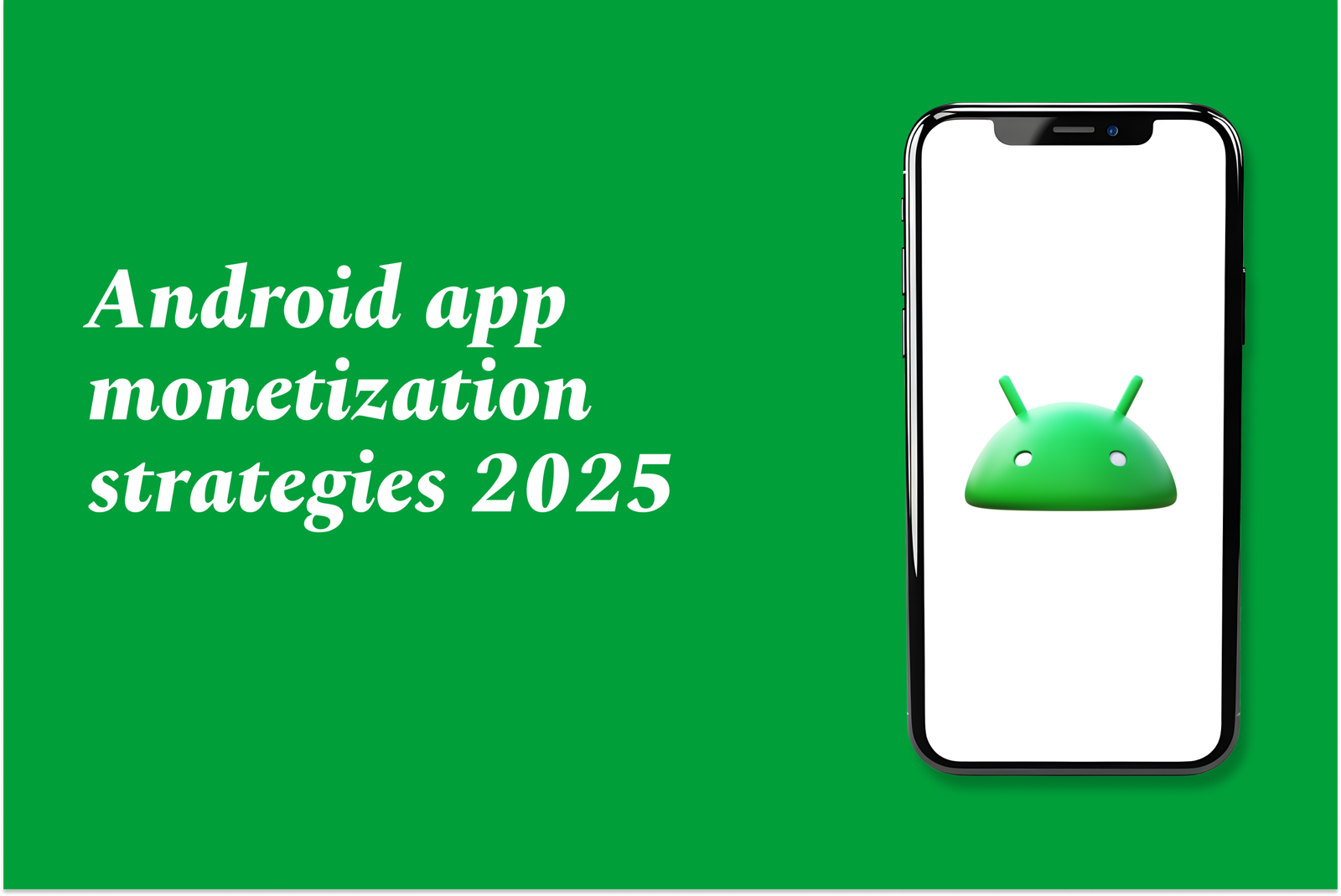Android App Monetization Strategies 2025
Android app monetization in 2025 involves strategies like in-app purchases, subscriptions, ads, and freemium models, balancing user experience with revenue. Privacy rules and app store fees drive hybrid approaches and alternative payment options for maximizing profits.
Android App Monetization Strategies 2025
1 ) Overview of Mobile App Monetization
Mobile app monetization is the process of generating revenue from an app’s user base via multiple methods such as in app purchases, advertising, subscription models, and freemium offers. Given the massive and growing number of app downloads and revenues globally—projected to continue rising through 2027—choosing the right monetization strategy is essential for sustained app growth.
2 ) Key Monetization Models for Android Apps in 2025
In App Purchases (IAP): Users buy digital goods or features inside the app. This model drives about 48.2% of all mobile app earnings and includes consumable and non consumable purchases.
In App Advertising (IAA): Various ad formats like banner, video, interstitial, and native ads generate income but must be balanced to avoid harming user experience.
Subscriptions & Freemium: Recurring subscription plans encourage steady revenue streams, while freemium models offer basic app usage free with paid upgrades or perks.
Pay Per Use/Premium Purchases: Some apps earn through one time payments or usage based pricing, appealing especially to niche or productivity apps.
Hybrid Monetization: Combining two or more strategies to diversify income can maximize revenue potential but requires careful management to maintain user satisfaction.
3 ) Monetization Trends and Challenges
Privacy and Regulation: Stricter data privacy laws and changes in ad tracking impact advertising based revenue streams, forcing adaptation.
User Behavior Changes: Growing user reluctance toward subscriptions and preference for ad hoc purchases demand flexible monetization models.
App Store Fees: High commission fees from Google Play encourage exploring alternative payment solutions outside standard app stores where possible, to increase margins.
4 ) Metrics for Measuring Monetization Success
To optimize strategies, developers should monitor:
ARPU (Average Revenue Per User)
User Engagement and Retention
Conversion Rates from Free to Paid Users
Return on Investment (ROI) from marketing and development efforts
5 ) Best Practices for 2025
Develop a balanced monetization approach that maximizes revenue without compromising user experience.
Utilize data driven decision making to adapt and refine monetization strategies constantly.
Consider selling apps or services outside traditional app stores to avoid commission fees and gain more control over payment and marketing.
Stay attuned to evolving privacy policies to comply and sustain ad revenues where applicable.
6 ) Case Insights from Leading Apps (Apple App Store & Google Play)
Top grossing apps leverage in app purchases, subscriptions, freemium models, and advertising effectively.
Apps like TikTok, Roblox, and Candy Crush use virtual goods sales, while platforms like YouTube and Tinder rely heavily on subscriptions.
Effective blend of revenue streams tailored to the audience and app category underpins success.
Summary:
In 2025, Android app monetization demands a sophisticated mix of strategies reflecting shifting user preferences, regulatory environments, and competitive app markets. Prioritizing user experience, leveraging hybrid monetization models, and employing precise data metrics will enable developers to maximize app revenue sustainably. Exploring web based sales outside app stores also offers promising opportunities to increase profits and retain control in an evolving landscape.
https://justacademy.in/news-detail/how-android-is-improving-privacy-in-2025
https://justacademy.in/news-detail/flutter-vs-swiftui:-ios-devs-take-note
https://justacademy.in/news-detail/flutter-roadmap-beyond-2025
https://justacademy.in/news-detail/android-system-resource-management
https://justacademy.in/news-detail/real-time-database-plugins-in-flutter
Related Posts
Java supports GDPR and data privacy by enabling secure data handling through encryption, controlled access, and precise data management. It allows developers to minimize PII exposure, ensure data confidentiality, and design workflows that comply with data protection regulations effectively.
Java code quality tools have evolved to include advanced static analysis, integrated security checks, and AI-powered code reviews. These updates help developers detect bugs, enforce coding standards, and enhance security, streamlining the development process and improving overall code reliability.
Java remains a cornerstone in big tech companies, evolving with modern features like records, pattern matching, and virtual threads. Its robust ecosystem, enhanced performance, and growing AI integrations keep it vital for both legacy systems and innovative new projects.
Java and CI/CD pipeline optimizations streamline Java application development by automating builds, tests, and deployments. They improve efficiency through parallelization, caching, and secure secrets management, enabling faster feedback loops and more reliable, scalable software delivery.
Java supports modern cryptography standards through its flexible Java Cryptography Architecture (JCA), enabling integration of advanced algorithms like AES, EdDSA, and post-quantum tools. Libraries like Bouncy Castle offer FIPS-certified, hardware-accelerated implementations for secure development.
Java 23 enhances record patterns by enabling concise, direct destructuring of record components within pattern matching, simplifying type checks and data extraction. This improvement boosts code readability and expressiveness by reducing boilerplate in handling immutable data classes.
Java remains a top choice for mobile app backends, powering scalable, secure, and high-performance server-side solutions. Latest trends include cloud-native microservices, reactive programming, and enhanced JVM optimizations, enabling efficient, flexible, and robust mobile backend development.
Java SE 24 and LTS Java SE 21 offer enhanced features and performance, while Apache Spark 4.0.0 introduces Scala 2.13 support and advanced ML and SQL capabilities. Together, they empower developers to build scalable, high-performance data applications with modern tools.
JUnit 5 modernizes Java testing with a modular architecture, improved assertions, and seamless Java 8+ support. Beyond JUnit, tools like Mockito and AssertJ enhance mocking and assertions, creating a powerful, flexible ecosystem for writing clean, efficient Java unit tests.
Java plays a pivotal role in cloud automation tools by providing a robust, platform-independent language used to build scalable automation frameworks like Jenkins and Selenium, enabling efficient CI/CD pipelines, testing, and orchestration across diverse cloud environments.










